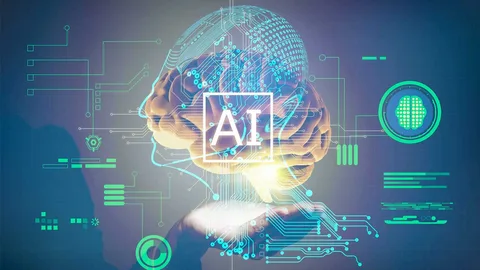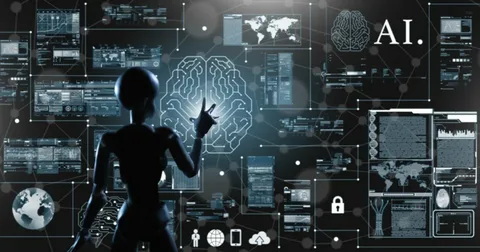In today’s fast-paced business environment, effective internal communication is crucial for organizational success. With the advent of artificial intelligence (AI), communication tools have evolved, enabling teams to collaborate more efficiently and enhance productivity. This article explores the top seven AI communication tools for 2024, highlighting their features, benefits, and how they can improve your internal communication strategies.
What are the Best AI Communication Tools for Internal Communication?
Overview of AI Communication Tools
AI communication tools are designed to streamline internal communication within organizations. These tools leverage advanced AI models to automate repetitive tasks, provide real-time feedback, and personalize interactions.
Tools like ChatGPT, for instance, can facilitate conversations, generate messages, and even assist in content creation, making them invaluable for enhancing communication skills in the workplace. As businesses continue to seek innovative ways to improve their workflows, the integration of AI-driven tools becomes essential for effective internal comms.
Benefits of Using AI Tools for Internal Communication
Utilizing AI tools for internal communication offers numerous benefits. First and foremost, these tools can significantly enhance productivity by automating mundane tasks, allowing employees to focus on more strategic initiatives. Furthermore, AI-powered communication tools provide real-time analytics, enabling organizations to analyze communication patterns and identify areas for improvement. By using AI, teams can also overcome language barriers, ensuring that messages are understood clearly and effectively across diverse workforces. Ultimately, AI communication tools can help save time and enhance employee engagement by fostering a more collaborative environment.
Criteria for Selecting the Best AI Communication Tool

When selecting the best AI communication tools for your organization, it’s essential to consider various criteria. First, look for tools that provide robust integration capabilities with existing platforms, ensuring a seamless transition for your team. Additionally, prioritize features like natural language processing and transcription capabilities, which can enhance user experience and facilitate better communication. Finally, evaluate the availability of free plans or trial periods, allowing your organization to test the tools before making a long-term commitment. By carefully assessing these factors, you can choose the right AI communication tool to meet your internal communication needs.
How Can AI Improve Your Communication Skills in the Workplace?
Using AI Tools to Enhance Communication Skills
AI-powered tools can play a pivotal role in improving your communication skills in the workplace. By utilizing features like real-time feedback on your communication, these tools can identify areas where you may need improvement. For instance, AI-driven platforms can analyze your message composition, suggesting enhancements in grammar, tone, and clarity, helping you to communicate more effectively. By continuously refining your skills through AI assistance, you can foster better interactions with colleagues and clients alike.
Real-time Feedback on Your Communication
One of the significant advantages of AI communication tools is their ability to provide real-time feedback on your communication. With applications like Grammarly and AI assistants, users can receive instant suggestions on how to improve their messages. This immediate feedback loop allows individuals to learn and adapt their communication styles quickly, ensuring that their messages are clear and impactful. By integrating such tools into your daily workflow, you can consistently enhance your communication skills, leading to more effective collaboration and engagement within your team.
Personalizing Communication with AI
AI can help personalize communication by analyzing user data and preferences. By leveraging AI-powered tools, organizations can tailor messages to suit individual team members, ensuring that communications resonate better and foster stronger connections. For example, AI models can learn about employees’ communication styles and preferences, enabling them to suggest personalized greetings or content that aligns with their interests. This level of personalization not only improves engagement but also cultivates a more inclusive work environment.
What Features Should You Look for in an AI Communication Tool?
Key Features of AI-Powered Communication Tools
When evaluating AI communication tools, it is crucial to consider specific features that can enhance their effectiveness. Look for tools that provide analytics capabilities, allowing you to track engagement and communication effectiveness over time. Features like chatbots can automate responses to common inquiries, freeing up time for team members to focus on more complex tasks. Additionally, ensure that the tool offers transcription services, which can be invaluable for capturing meeting notes and facilitating follow-ups.
Importance of Integration with Existing Platforms
Integrating AI-powered communication tools with existing platforms is essential for maximizing their potential. The best AI communication tools should seamlessly integrate with tools like Slack, Microsoft Teams, or email platforms, ensuring that your team can easily adopt and utilize the new technology without disrupting their existing workflows. By choosing tools that integrate effectively, organizations can enhance productivity and streamline communication efforts across departments.
Analyzing Productivity with AI Communication Tools
AI communication tools are equipped with powerful analytics features that can help organizations analyze productivity and communication efficiency. These tools can track key performance indicators such as response times, message engagement rates, and overall communication flow within teams. By leveraging these insights, organizations can identify bottlenecks, streamline processes, and ultimately enhance productivity. The data-driven approach provided by AI tools enables companies to make informed decisions that can lead to improved internal communication strategies.
How to Use AI Tools for Internal Communication Effectively?
Strategies for Implementing AI in Communication
Implementing AI tools for internal communication requires careful planning and strategy. Start by defining clear objectives for what you hope to achieve with AI integration. This may include improving response times, increasing engagement, or enhancing overall communication clarity. Next, involve your team in the decision-making process, ensuring that everyone understands the benefits of the new tools and how to use them effectively. Providing adequate training and resources will also be crucial for a successful implementation.
Best Practices for Using AI Communication Tools
To maximize the effectiveness of AI communication tools, it is essential to follow best practices. First, encourage regular usage among team members to foster familiarity and comfort with the tools. Provide continuous feedback and support as employees navigate the new technology. Moreover, keep communication channels open for discussing challenges or suggestions for improvement, as this will create a collaborative environment. By adhering to these best practices, organizations can ensure that their investment in AI communication tools yields significant returns.
Examples of Successful AI Communication Implementations
Several organizations have successfully implemented AI communication tools to improve their internal communication. For instance, a tech company utilized an AI-powered chatbot to handle employee inquiries, significantly reducing response times and allowing HR personnel to focus on more strategic tasks. Another business integrated AI transcription services in their meetings, ensuring accurate record-keeping and improving follow-up communication. These examples demonstrate how AI-driven tools can enhance internal communication, leading to increased efficiency and employee satisfaction.
What Role Does Generative AI Play in Internal Communication?
Understanding Generative AI in Communication Tools
Generative AI refers to the ability of AI systems to create content, messages, or responses based on user input and historical data. In the context of internal communication, generative AI can be utilized to draft emails, create reports, and even generate meeting agendas. By automating these processes, organizations can save time and reduce the cognitive load on employees, allowing them to focus on higher-level tasks that require critical thinking and creativity.
AI-Generated Messages and Content Creation
AI-generated messages can significantly improve internal communication by providing a starting point for drafts, ensuring that teams can communicate efficiently and effectively. Tools that utilize generative AI can analyze past communications to suggest phrases or content that align with the organization’s tone and style. This not only streamlines the content creation process but also helps maintain consistency across internal communications, fostering a cohesive company culture.
Utilizing Conversational AI for Employee Engagement
Conversational AI plays a vital role in enhancing employee engagement by facilitating real-time interactions and fostering a sense of community within organizations. AI-driven tools can enable employees to ask questions, seek information, or provide feedback in a conversational manner, creating a more dynamic communication environment. By utilizing conversational AI, organizations can ensure that employee voices are heard, leading to improved morale and a more engaged workforce.




Leave a Comment